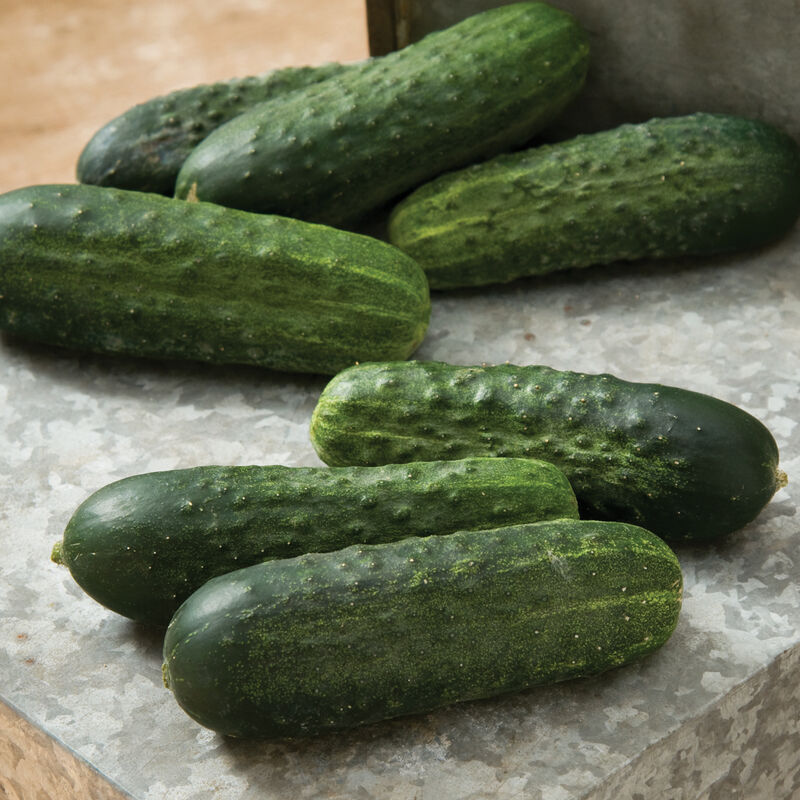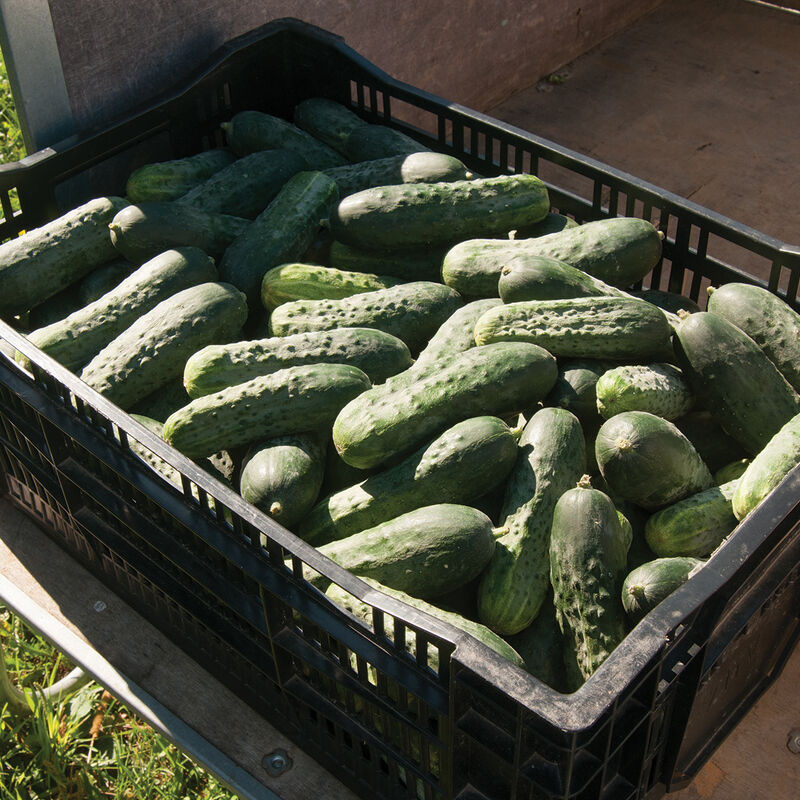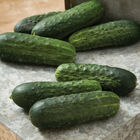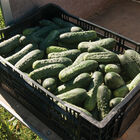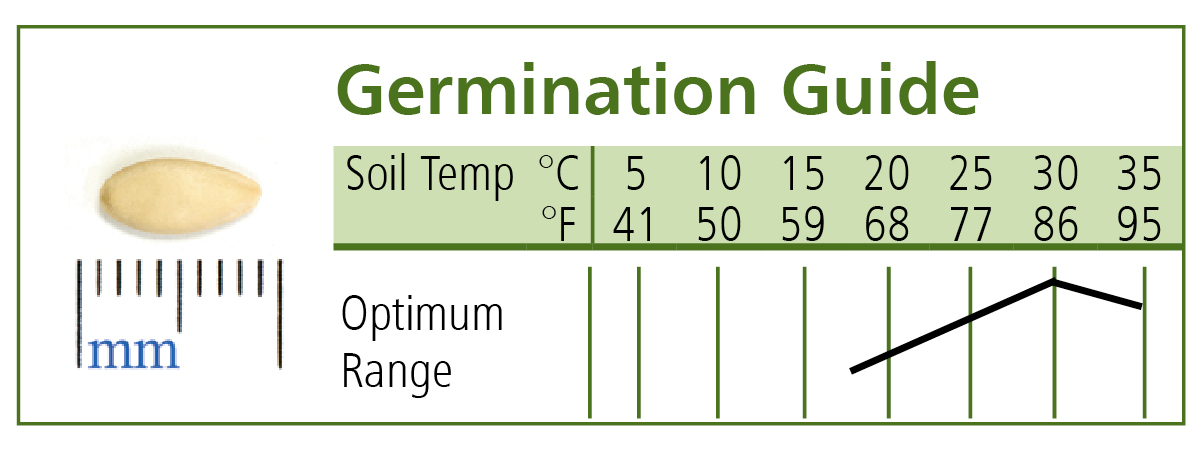Excelsior Organic (F1) Cucumber Seed
Excelsior Organic (F1) Cucumber Seed
Attractive, high-yielding pickler for the greenhouse.
Excelsior produces dark green, blocky, nicely proportioned 4–5" cucumbers with American-style spines. Vigorous, balanced plant with consistent fruit setting. Excellent flavor. Also does well in screen houses, in the field under row cover, or wherever else pollinators are absent. Parthenocarpic and gynoecious. USDA Certified Organic.Disease Resistance:
Specs:
- This product does not ship to the following countries: United Arab Emirates, Austria, Australia, Barbados, Belgium, Bulgaria, Bermuda, Bahamas, Switzerland, Cyprus, Czech Republic, Germany, Denmark, Estonia, Spain, Finland, France, United Kingdom, Greece, Hong Kong, Croatia, Hungary, Ireland, Iceland, Italy, Japan, Republic of Korea, Kuwait, Cayman Islands, Lithuania, Luxembourg, Latvia, Malta, Netherlands, Norway, New Zealand, Oman, Poland, Portugal, Qatar, Romania, Saudi Arabia, Sweden, Singapore, Slovenia, Slovakia, San Marino, Thailand, Trinidad and Tobago, Taiwan, Ukraine.
CULTURE:
Cucumbers thrive in a tunnel or greenhouse environment, which increases your control over fruit quality and extends the harvest season, both early and late. Growing info is similar to field cucumbers, but transplants are typically started earlier and may need supplemental lighting and heat to maintain strong seedlings. We highly recommend using parthenocarpic varieties for greenhouse or tunnel production, as pollination can be challenging in a protected growing environment. When isolated from regular varieties, parthenocarpic types will produce seedless fruit.DAYS TO MATURITY: From direct seeding; subtract about 10 days for days to maturity from transplanting.TRANSPLANTING INDOORS:
Sow indoors in 50-cell plug trays, 1–2 seeds/cell, 3–4 weeks before transplanting. Keep temperatures at 80–85°F (27–29°C) until seedlings emerge, using a heat mat to maintain consistent temperatures. After germination, keep temperatures at 73–76°F (23–24°C) day and a minimum of 70°F (21°C) night. Transplant once seedlings have approx. 3 true leaves, and before they begin to stretch in the tray. A common plant spacing is 2 rows per bed, with 12–18" between plants, but this may vary depending on variety, climate, disease pressure, and pruning methods. Minimize disturbing roots when transplanting. Cucumbers are healthiest when the soil temperature in the root zone is about 65–70°F (18–21°C). Grafted plants can typically tolerate cooler soil temperatures. For the first week after transplanting, maintain both day and nighttime temps around 75°F (24°C) to promote rapid foliar and root growth. At fruit set, reduce nighttime temps to about 65°F (18°C) and monitor plants to manage them toward season-long productivity.Trellising & Pruning: Trellis each plant onto a vertical string with trellis clips roughly 1" below every third leaf. Prune side-shoots off the main vine at each node, taking care not to damage the developing fruit. Keep taut and reuse bottom clips, keeping at least 3–4 per string. Consider a "Lower-and-Lean", or "Lower and Coil" system if you have a long season, capable structure, and enough labor. The "Umbrella" system is better suited to growers with a very short growing season or more limited labor. More information is available in our Greenhouse Cucumber Production Guide. Keep grafted plants free from scion roots and rootstock suckers.
DISEASES:
Most greenhouse diseases of cucumbers are exacerbated by high humidity and stagnant air. Powdery mildew in particular is a very common disease in cucumber greenhouses in the Northeast. Ensure proper venting and crop spacing to allow for sufficient airflow. Pruning lower leaves can help to manage diseases and steer towards maximum production. If possible, practice crop rotation, residue sanitation, and choose disease-resistant varieties.INSECT PESTS: Greenhouses or hoophouses can be installed with screens to prevent damage from common insect pests, as well as to prevent pollination of seedless varieties. Excluding cucumber beetles will also help prevent bacterial wilt.HARVEST & STORAGE: Thin-skinned varieties require more care during harvest and storage to avoid abrasions, cuts, and bruising on the fruit. Thin-skinned fruit will also dehydrate more quickly than most field varieties and require more humid storage conditions: store at 50–55°F (10–13°C), and 95% relative humidity.TRANSPLANTS: Avg. 90 plants/100 seeds.SEEDS/LB. (AVG.): 18,700 MINI: 10 seeds.PACKET:
30 seeds.Johnny's is committed to your success, every step of the way.
We want you, our customer, to be 100% satisfied with all of our seeds, tools, and supplies.
If anything you purchase from us proves unsatisfactory, we will either replace the item or refund the purchase price.


